
Sunder Nursery: Reviving Heritage through Urban Renewal in New Delhi
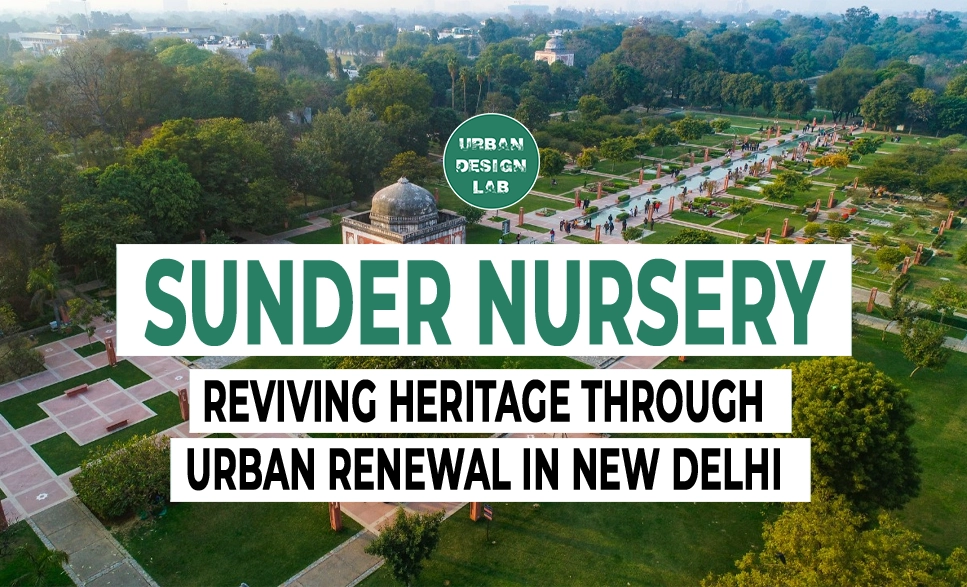
Sunder Nursery is a 90-acre heritage park located near Humayun’s Tomb in Delhi. It is an outstanding example of urban design that combines history, ecology, and community engagement. The Aga Khan Trust for Culture (AKTC) revitalized the park as part of the Nizamuddin Urban Renewal Initiative. Originally a Mughal-era garden and later a British plant nursery, the park’s design, led by landscape architect M. Shaheer, integrates Mughal garden aesthetics with modern sustainability practices, such as rainwater harvesting, wetland creation, and the preservation of over 300 native tree species. The project’s key features include the restoration of heritage monuments like the Sunder Burj, the incorporation of a central axis inspired by Mughal charbagh layouts, and the creation of vibrant public spaces.
Sunder Nursery serves as a green lung for the city, providing recreational spaces, educational programs, and a habitat for over 80 bird species. Moreover, it has become a center for cultural activities, improving the quality of life of the local community and attracting tourists. Despite challenges like maintenance and overcrowding, Sunder Nursery stands as a model for sustainable urban development, showcasing how public spaces can preserve heritage, support biodiversity, and promote community engagement.
Introduction
Sunder Nursery, near Humayun’s Tomb in New Delhi, has been revitalized by the Aga Khan Trust for Culture (AKTC) as a model for urban renewal. This 90-acre heritage park, located in the heart of Nizamuddin, combines history, nature, and community engagement. Originally a Mughal-era garden, it has been transformed into a dynamic public space, providing much-needed greenery in densely populated Delhi. In this article, we will examine the design, characteristics, and impact of Sunder Nursery on the community and the city as a whole, assessing its success in creating an inclusive, sustainable, and vibrant public space.
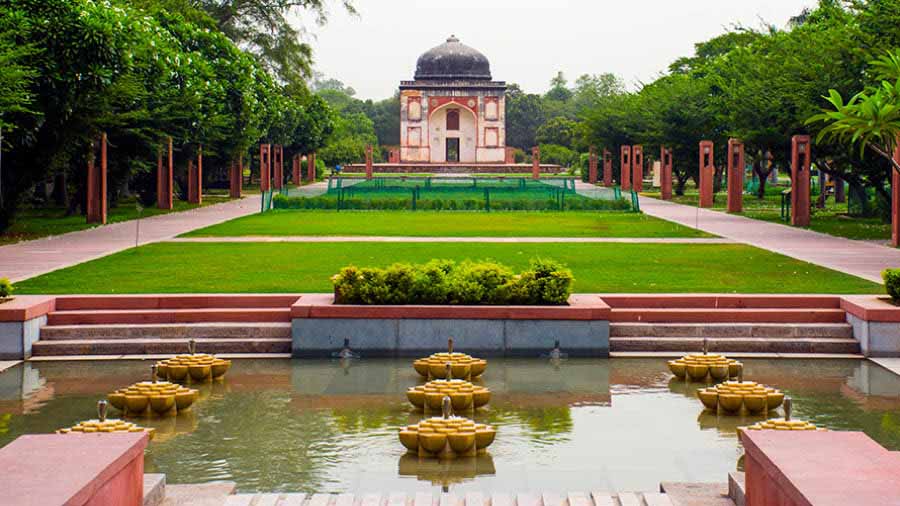
Historical Context and Cultural Significance
Sunder Nursery was created by the British in the early 20th century as a plant nursery for the New Delhi capital complex. But its history goes back even further to the time of the Mughals when the area around Humayun’s Tomb was a cemetery containing over 100 tombs. The Aga Khan Trust intervened to restore the ecological and historical importance of the site and to provide much-needed public space for the people of Delhi. The site is located near the UNESCO World Heritage site of Humayun’s Tomb, so preserving its heritage is crucial.
The project’s design aligns with the broader goals of the Nizamuddin Urban Renewal Initiative, which aims to enhance urban heritage through sustainable changes. The Aga Khan Trust for Culture’s mission goes beyond just restoring buildings; it focuses on reviving the urban area for the benefit of local communities. This makes Sunder Nursery not just a cultural site, but an active part of the city’s daily life.
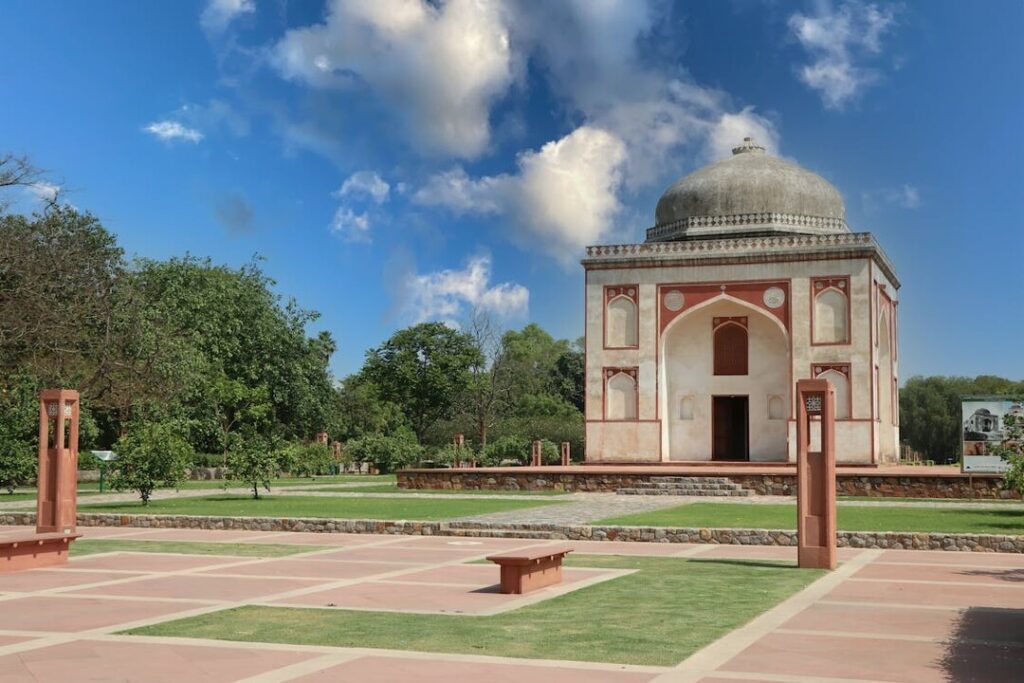
Source: Website Link
Design and Planning : A Sustainable Vision
- The Sunder Nursery master plan, designed by landscape architect M. Shaheer, combines Mughal garden design with modern sustainability. It includes geometric layouts, paths, and water features, along with restored heritage monuments and native plants to create a balanced city ecosystem blending history and modern use.
- Heritage Restoration was a major project focus. Monuments like the 16th-century Sunder Burj were carefully restored using traditional methods to maintain their Mughal grandeur. Placing these monuments within the landscape creates a unique atmosphere, weaving historical tombs with lively gardens for a peaceful visitor experience.
- Environmental Revitalisation transformed the site into a thriving green space with over 300 tree species and attracting over 80 bird species. Wetlands and water bodies help recharge groundwater and offer educational opportunities for sustainable landscaping and water conservation.
- At the park’s core is a Mughal-inspired Central Axis with the traditional charbagh layout, featuring water channels, flower beds, and reflecting pools. This blend of historical and modern elements offers cultural reflection and modern amenities, making Sunder Nursery a valuable public space for both recreation and learning.
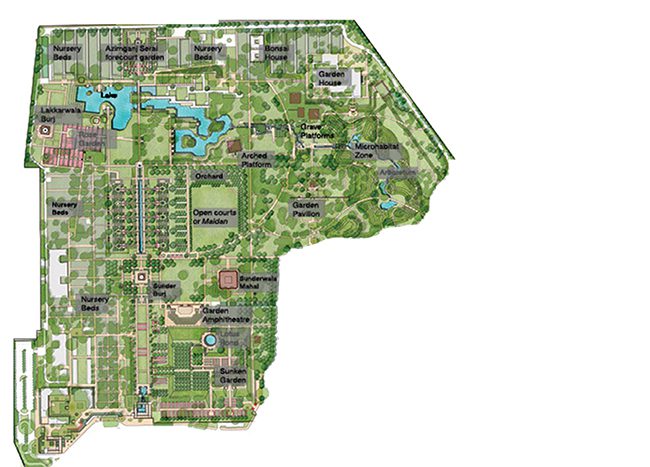
Contribution to Community
- Sunder Nursery is an important public park in Delhi, located near Humayun’s Tomb and the densely populated Nizamuddin area. It provides much-needed green space in a city where public parks are often hard to find and overcrowded.
- Inclusivity and Accessibility: The park is designed to be inclusive and accessible to everyone. It offers amenities such as children’s play areas, picnic spots, and cultural spaces, making it enjoyable for families, children, elderly citizens, and tourists. The affordable entry fee ensures that the park is open to people from all walks of life. Additionally, Sunder Nursery hosts performances, exhibitions, and workshops, creating a sense of community engagement.
- Educational and Environmental Resource: The park also serves as an educational and environmental resource. It features rich biodiversity and offers learning opportunities about Delhi’s flora, fauna, and historical significance. The park is committed to environmental sustainability through ecological restoration efforts, including wetland creation and sustainable water management practices.
- Sunder Nursery’s initiatives, such as Rainwater Harvesting, Composting, and Organic Gardening, contribute to ecological preservation and community well-being, setting an example for sustainable urban parks across India.
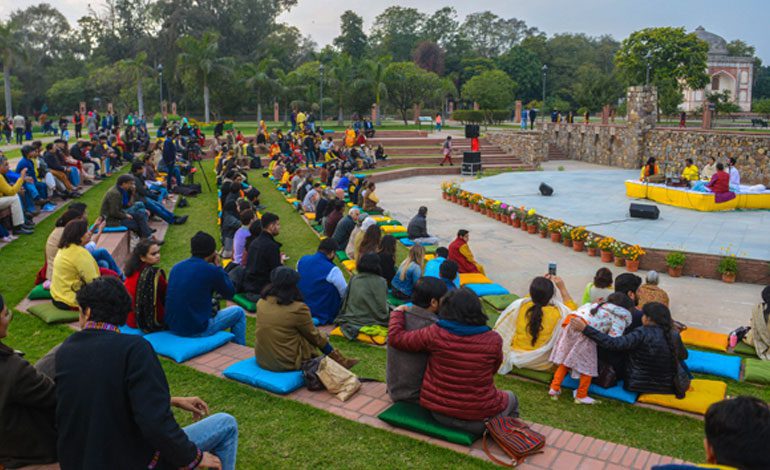
Challenges and Areas for Improvement
Sunder Nursery has been successful in design and community impact but faces maintenance challenges due to its large size, requiring significant financial and human resources. Keeping the park clean, safe, and well-maintained is crucial for its long-term success. Another challenge is managing the increasing number of visitors without overcrowding the park, especially on weekends and during cultural events. Balancing the needs of tourists and local residents while maintaining the park’s tranquility and accessibility requires ongoing attention.
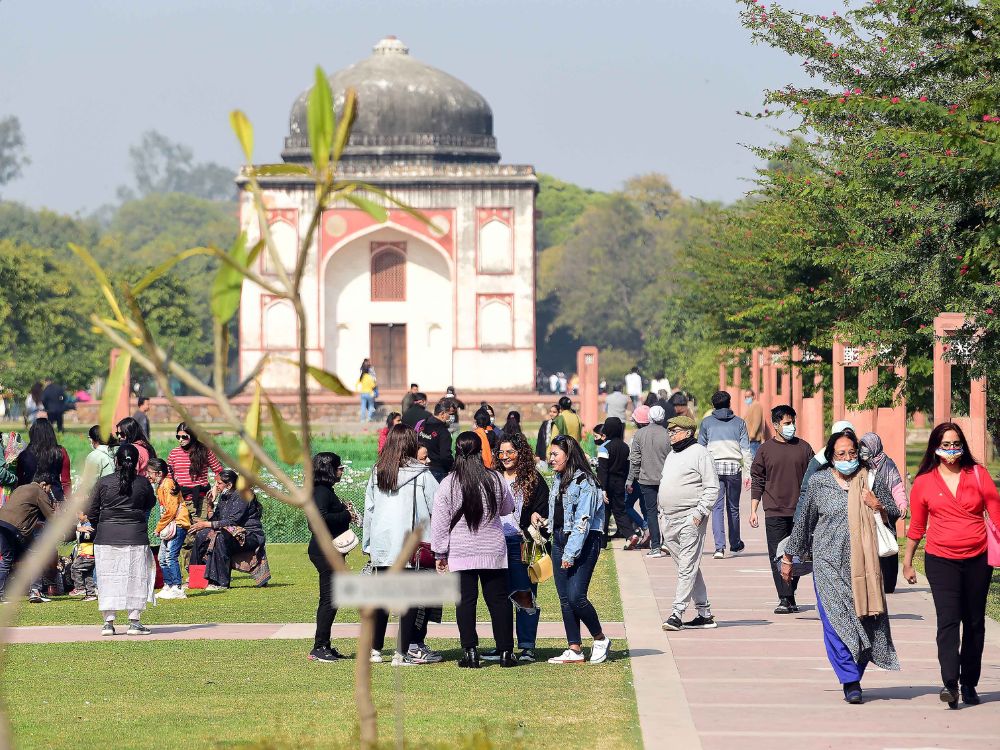
-1
-1
-1
-1
-1
Conclusion
Sunder Nursery is a testament to the power of thoughtful urban design in creating public spaces that are both functional and beautiful. Its blend of heritage conservation, ecological restoration, and community engagement makes it a model for urban renewal projects in India and beyond. By drawing on the area’s rich cultural and historical context, the Aga Khan Trust for Culture has succeeded in creating a space that is not only a sanctuary for Delhi’s residents but also a vibrant cultural and ecological landmark.
The park’s design demonstrates that urban spaces can serve multiple functions: preserving history, fostering biodiversity, providing recreation, and promoting social cohesion. As cities continue to grow and evolve, projects like Sunder Nursery will be essential in ensuring that urban environments remain livable, sustainable, and inclusive.
References
- Aga Khan Trust for Culture. (2018). Nizamuddin Urban Renewal Initiative: Sunder Nursery Restoration. Aga Khan Development Network.
- Brown, L. (2020). Mughal gardens and urban spaces: The Sunder Nursery example. Journal of Landscape Architecture, 15(2), 120-135.
- Chaudhuri, A. (2019). Revitalizing heritage: An overview of the Sunder Nursery project. Urban India, 42(3), 50-65.
- Shaheer, M. (2021). Landscape design for Sunder Nursery: Blending heritage with ecology. Architecture and Design, 6(1), 88-103.
- Singh, R. (2019). Cultural heritage and public space: The Aga Khan Trust’s vision for Sunder Nursery. South Asian Heritage Quarterly, 11(1), 36-49.

Vanshika Bajaj
About the Author
An Architect and an Urban Regeneration specialist by profession, Vanshika Bajaj is a highly motivated, enthusiastic and dedicated professional with background in Architecture, Urban Design, Planning and Research.
She is skilled in conducting spatial Analysis to identify issues and potential related to socio-ecological aspects of urban Areas. She has also gained experience in research, documentation, critical thinking, onsite surveys, fieldwork, interviews & community participation.
Related articles



History of Urban Planning in India
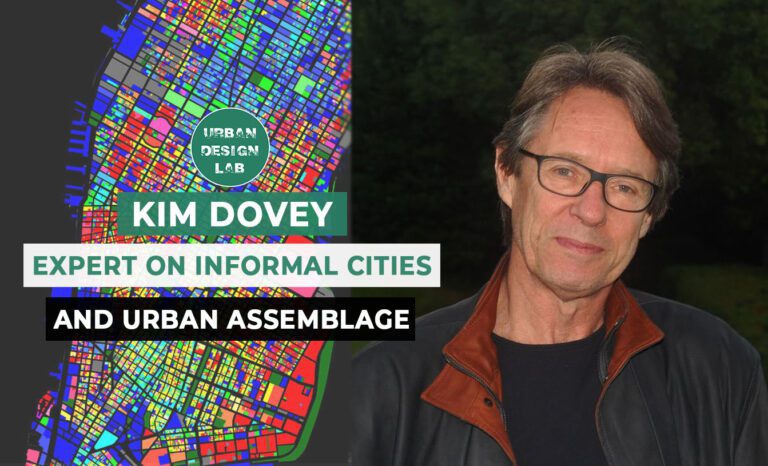
Kim Dovey: Leading Theories on Informal Cities and Urban Assemblage
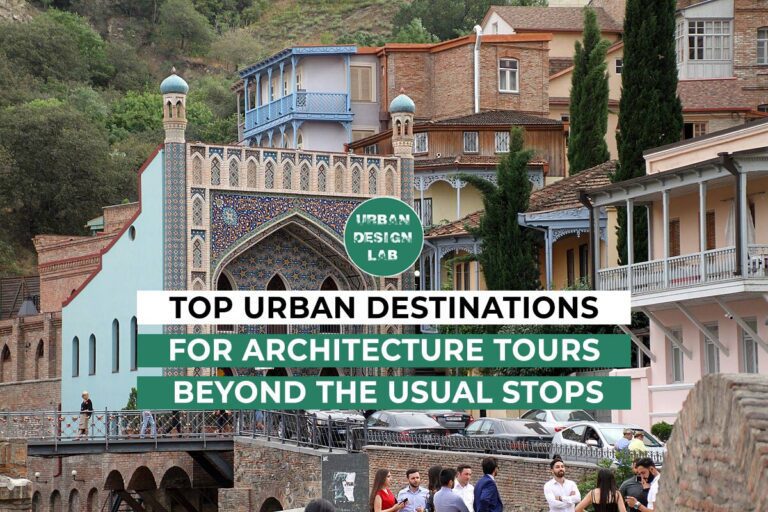
Top Urban Destinations for Architecture Tours Beyond the Usual Stops
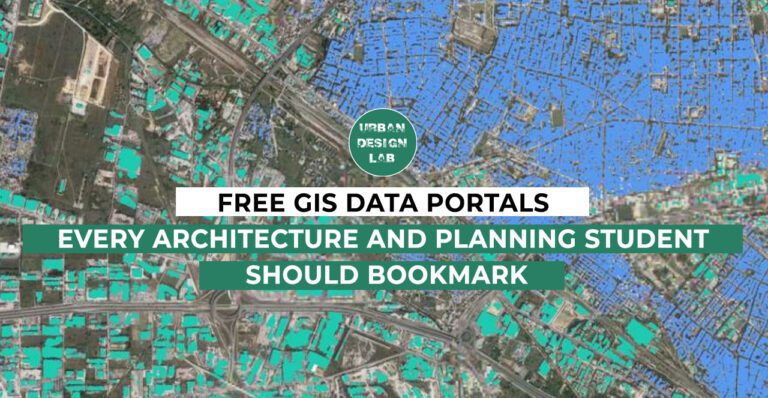
UDL GIS
Masterclass
Gis Made Easy- Learn to Map, Analyse and Transform Urban Futures
Session Dates
15th-19th December 2025

Urban Design Lab
Be the part of our Network
Stay updated on workshops, design tools, and calls for collaboration
Curating the best graduate thesis project globally!

Free E-Book
From thesis to Portfolio
A Guide to Convert Academic Work into a Professional Portfolio”
Recent Posts
- Article Posted:
- Article Posted:
- Article Posted:
- Article Posted:
- Article Posted:
- Article Posted:
- Article Posted:
- Article Posted:
- Article Posted:
- Article Posted:
- Article Posted:
- Article Posted:
- Article Posted:
- Article Posted:
Sign up for our Newsletter
“Let’s explore the new avenues of Urban environment together “



























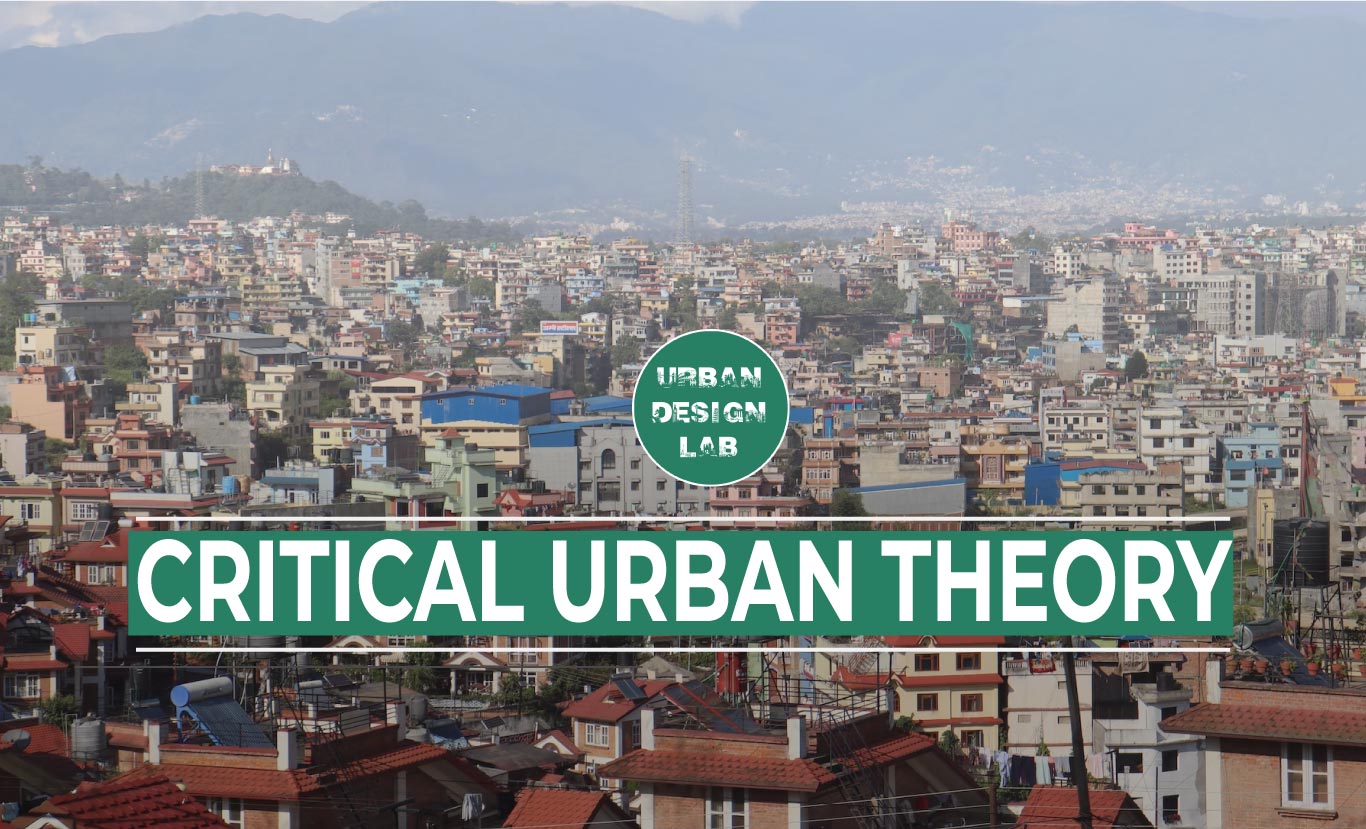
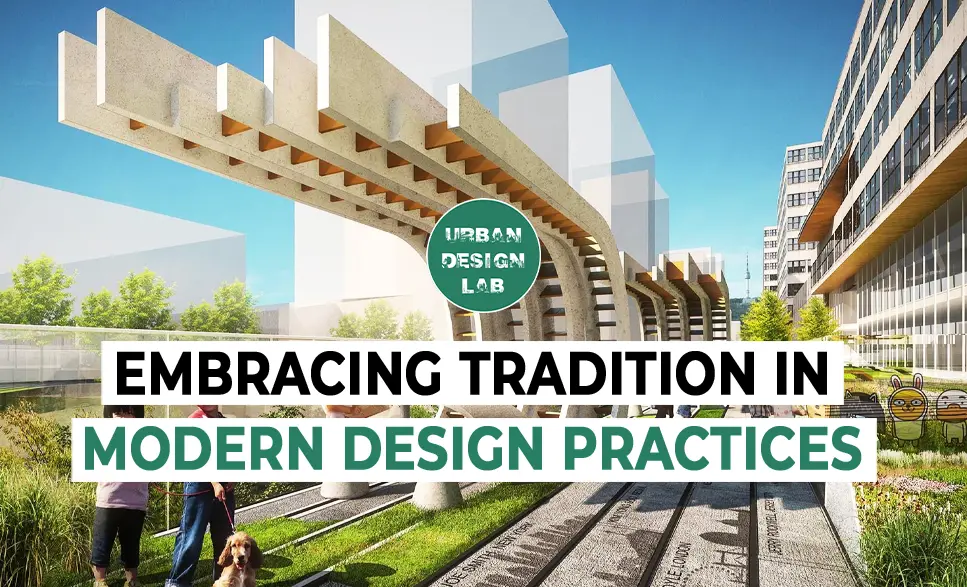

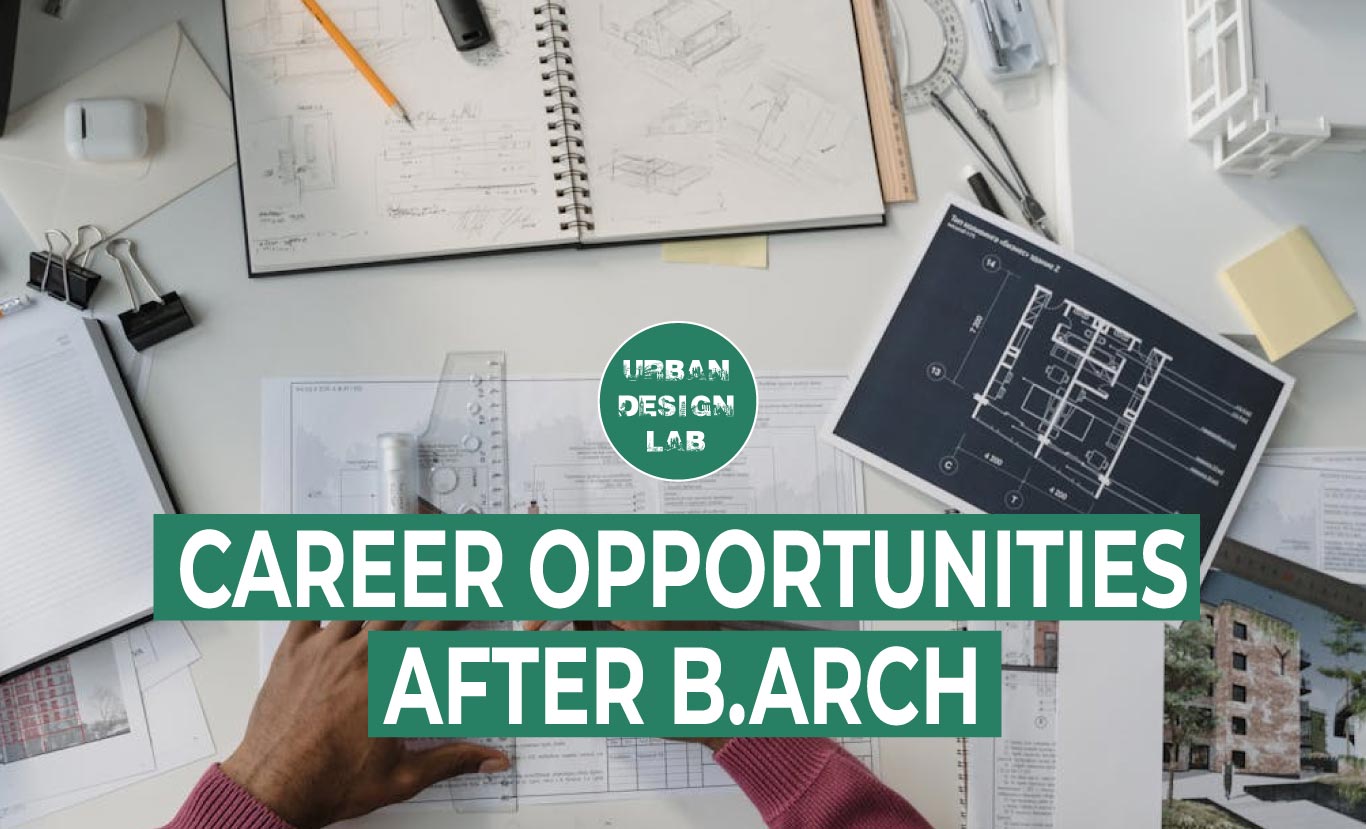

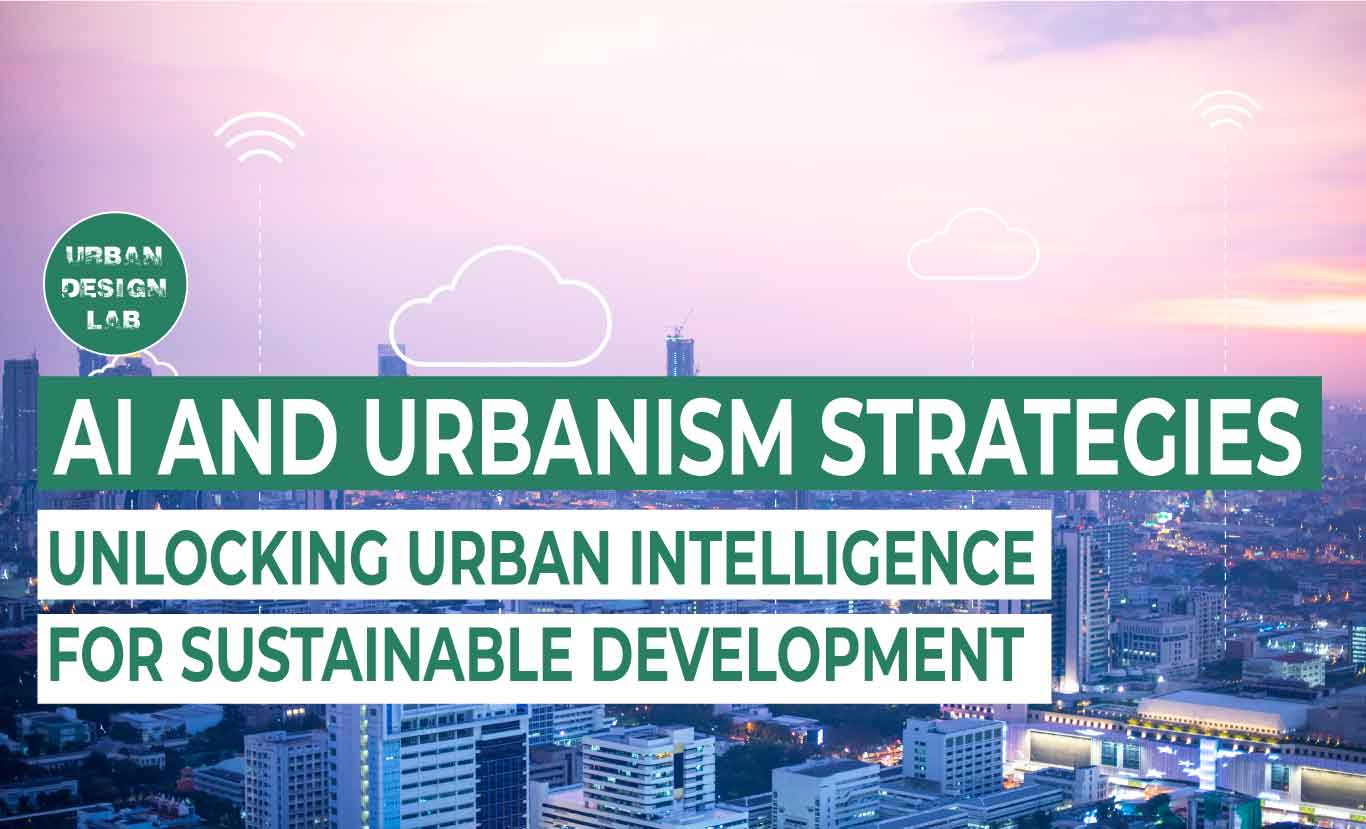

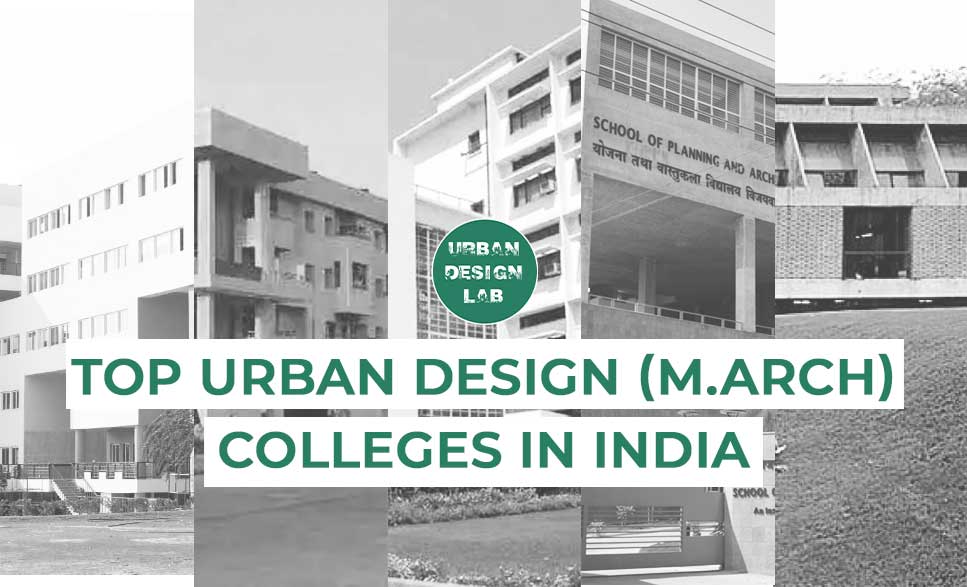
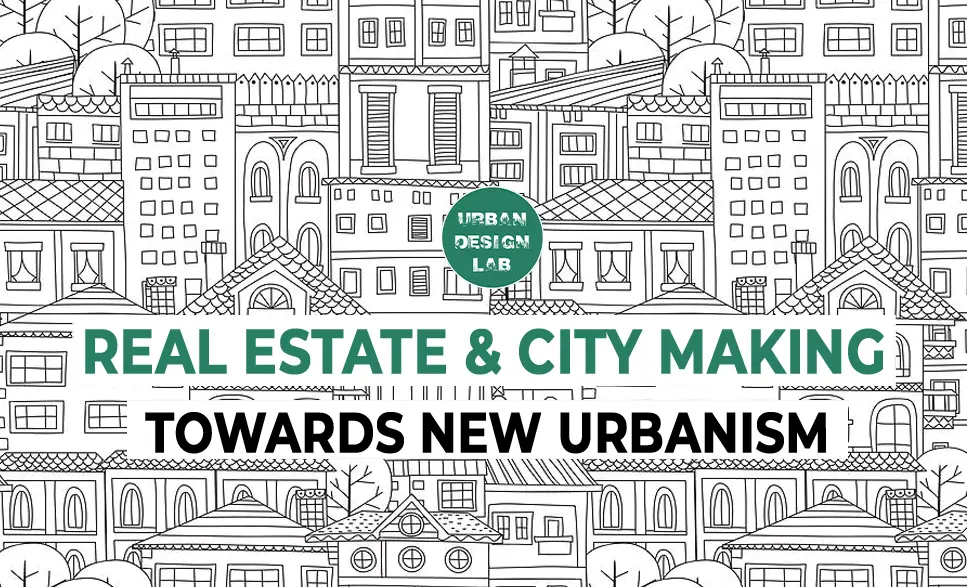
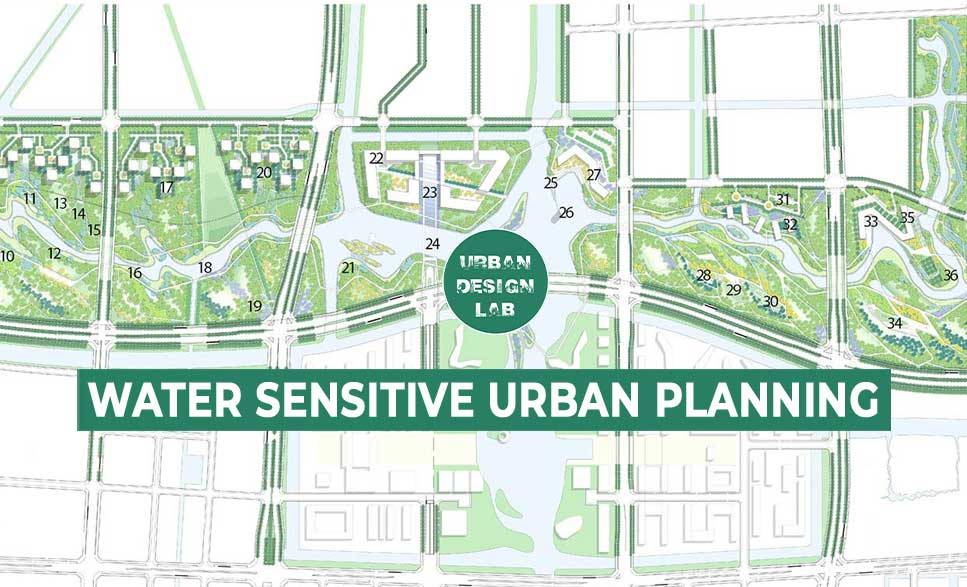
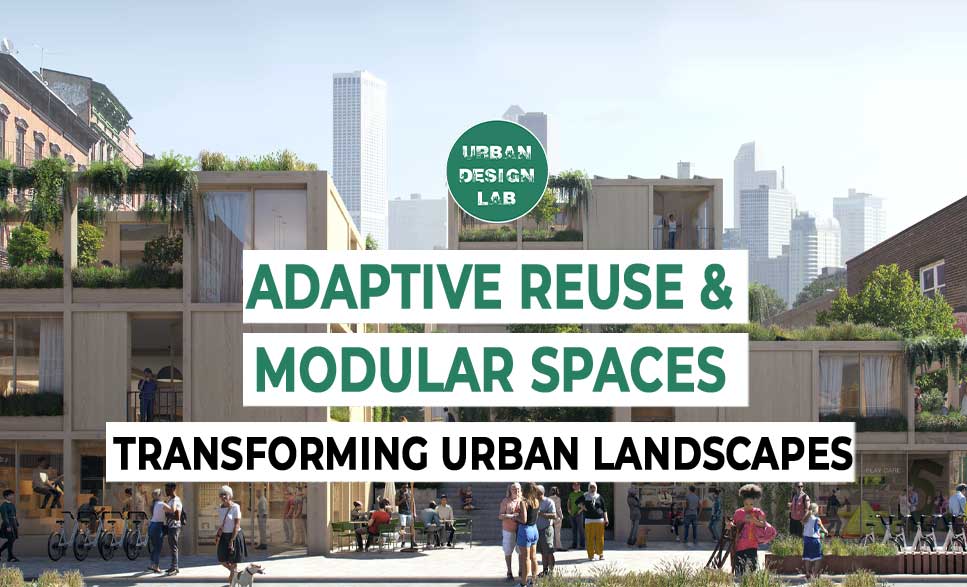
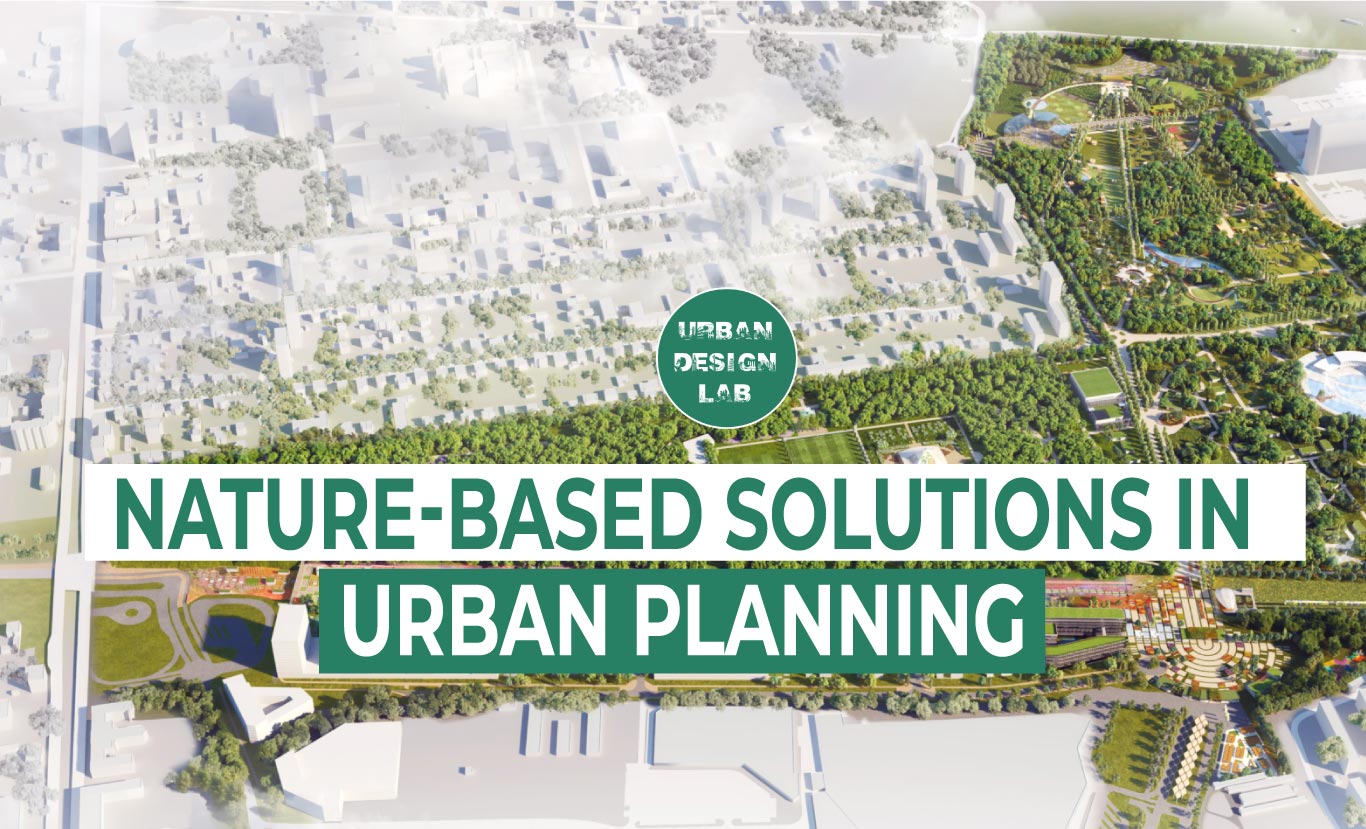
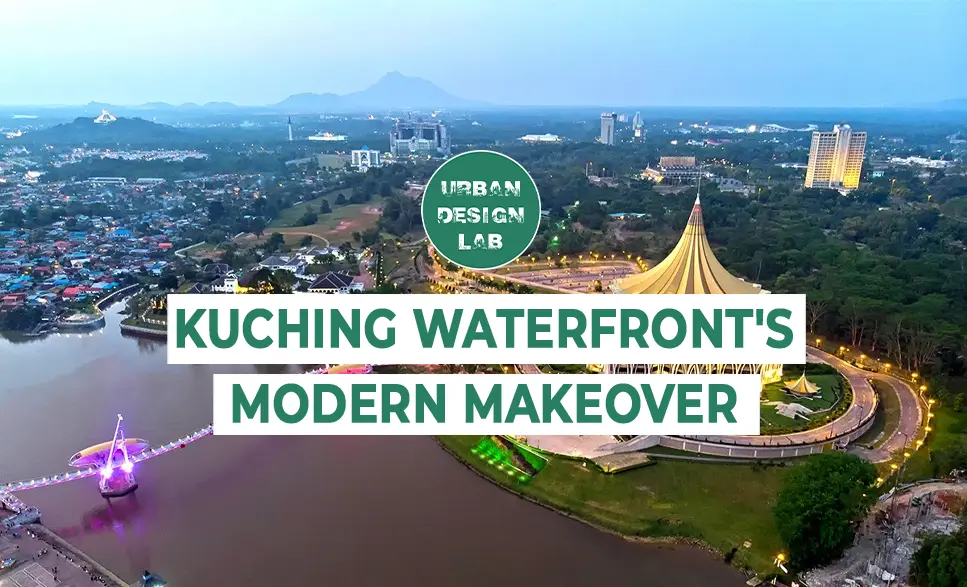




One Comment